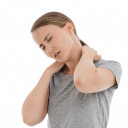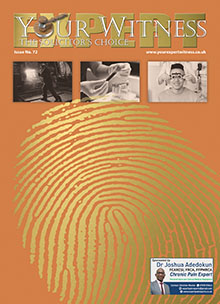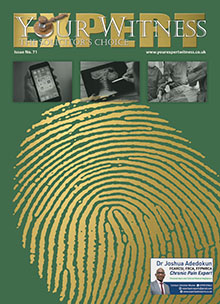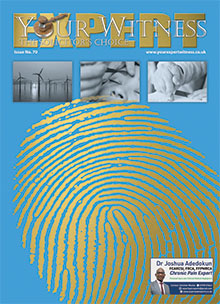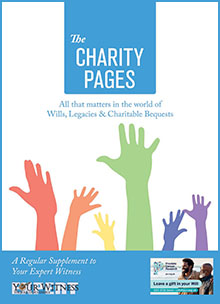THE PURPOSE of this article is to inform lawyers that if their clients have taken either prescription medicines or illegal substances prior to alleged offences, it is always in the defendant’s interests to instruct a pharmaceutical physician with an interest in forensic pharmacology to provide an expert opinion as to the possible role played by these substances on their client’s behaviour.
The focus of this brief introduction to forensic pharmacology will be on medicines prescribed by qualified doctors, although even if the substances have not been prescribed – if the defendant is not aware of the ingestion – the role played by the substances is usually taken into account by juries and the court.
Even if the intoxication is self-induced, it may be a partial or complete defence to crimes of specific intent if it can be shown that the defendant lacked the necessary mens rea due to drink or drugs. It has been successfully argued that if the self-intoxication is ‘very extreme’ mens rea may be negated.
It is possible that crimes of specific intent may reduce the liability to the lesser crime of basic intent, and it has been successfully argued that murder cases should be reduced to charges of manslaughter and wounding with intent to malicious wounding.
Similarly, where there is no lesser included offence, the defendant has sometimes been acquitted or the selfinduced intoxication has been used in mitigating circumstances.
It is, however, very important to understand that if a defendant has taken a prescribed medication of which he did not know the effects, particularly if the defendant could not have known that the medication could produce alterations to their mental state or behaviour, the possible adverse effects of the medication may serve as a complete defence.
Any medication taken is capable of altering a defendant’s psychological and physiological state, even if the main effect of the medicine is not on the central nervous system.
For instance, Myler’s Side Effect of Drugs lists over 70 medications capable of producing a psychosis.
This, of course, includes many prescription medicines which are given to have a primary effect on the central nervous system, such as anti-depressants, but also includes drugs to lower blood pressure, to treat angina and other forms of heart diseases, many antibiotics, common drugs given for pain and inflammation, and drugs given for fungal infections as well as steroids, to name but a few.
As another example, there is a long list of medications which may produce confusion.
The two non-primarily central nervous system medications which should immediately be recognised by lawyers are the antimalarial drug Mefloquine and the antibiotic Metronidazole, as both are well recognised to cause neuro-psychiatric side-effects. Many other antibiotics may similarly produce alterations to the patient’s mental state.
The psychoactive substances which I have been most often asked to provide a report on are the benzodiazepine anxiolytics such as Diazepam, Temazepam, Nitrazepam and the many others which not only may cause amnesia for the alleged offence but also may induce a state of automatism which may negate mens rea. This class of compounds may also lead to disinhibited and abnormal behaviour in patients taking them, either as prescribed medication or illegally. The newer benzodiazepine type of hypnotics, Zolpidem and Zopiclone, cause similar problems.
If benzodiazepines did not alter people’s ability to act without the necessary intent, then there could never be prosecutions for Rohypnol or other benzodiazepineinduced sexual assaults, as one would have to assume that the assaulted party was capable of making a judgement. All such cases, however, are usually decided on the basis that they were not capable of making the judgement to agree to sexual contact.
If a lawyer wants to have an initial understanding of whether a particular prescribed medicine may have precipitated particular behaviour or alterations of psyche, the Summary of Product Characteristics of all products available from the ethical pharmaceutical industry may be found at a website called the Electronic Medicines Compendium (www.medicines.org.uk). It should be noted, however, that many generic medicines which are no longer prescribed in a branded form are not listed at this web site.
The Summary of Product Characteristics is a legal document drafted by the product licence holder and approved by a regulatory body. In the UK, this would be the Medicines and Healthcare Products Regulatory Agency.
With particular reference to the benzodiazepines, many of these Summary of Product Characteristics note that the medicine may cause unusual behaviour and induce anterograde amnesia. They also note that these substances may cause paradoxical aggression and increase in anxiety. They therefore may be of relevance to any case which involves aggressive behaviour by a defendant who has taken one of these compounds.
When a complete forensic pharmaceutical report is produced on a substance the Summary of Product Characteristics is the first reference source while an equally important source is the Physicians’ Desk Reference published in the United States and which contains all the approved product inserts of branded pharmaceuticals available in America.
The product insert is an agreed document between the product licence holders and the Food and Drug Administration, the US Governmental department responsible for licensing. In relation to side-effects and adverse effects it is usually far more detailed than the British equivalent.
It is also possible to link into the Medicine and Healthcare Regulation Agency’s Adverse Events database to find out how often an adverse event has been reported to the authorities for any particular drug. It should be noted that the MHRA’s system is a spontaneous reporting system and does not always take into account cause and effect. Even for serious adverse drug reactions there is a great deal of underreporting, with only 10% of even serious adverse drug reactions being reported.
Pharmaceutical physicians are used to producing reports for regulatory agencies in support of the registration of medicinal products, and these reports have to be well referenced from the original scientific literature and studies which have been conducted.
Expert reports from such individuals usually have their opinions well referenced by published articles and regulatorily approved documents.
In addition to the primary pharmacological effects of medicines, their relevance in individual cases will be dependent on the medical health of the defendant and the functioning of their bodily systems such as their liver, kidneys and heart. A full review of the defendant’s medical records is therefore necessary to allow for the many ways in which a defendant’s health may alter the effects of the medication to be identified.
Such a review of their medical records will also allow identification of other medicines they are taking and the potential effects of any interactions between all the medicines on both their absorption, metabolism and excretion as well as on any direct physiological interaction.
The review of the medical notes also allows identification of any warnings that the defendant’s doctors may have given them. Such warnings may also be found in the patient information leaflets usually given when medicines are dispensed.
The British Medical Association News dated 24 November 2007 has an article which states that it is almost essential that expert witnesses consult the medical records and, if these are unavailable, this should always be noted, the possible implications should be listed, and possibly even a note inserted into the expert report that, because these are unavailable, a complete opinion cannot be given.
Additionally, the product licence holders, particularly those who are members of the Association of the British Pharmaceutical Industry, are very helpful if requests are made to them to search their worldwide databases by experienced personnel.
In particularly serious criminal matters, or for civil cases where the compensation may involve large sums of money, original searching and summary of the worldwide scientific literature is always appropriate to the defence.
It should be remembered that medicines are often taken while defendants are in custody, and the effect of these on the defendant’s disposition during questioning and interview should also be taken into account.
In England a defendant is entitled to the best defence that is possible. There is no doubt that in this modern world, where most of the population will take a prescription medicine at least once a year and many are taking medicines for life, solicitors and barristers consider the possibility that such prescription medicines may play a part in the defendant’s emotions, mood or behaviour. It is therefore essential that they ask for a professional opinion on the role that medication may have played in their client’s behaviour in relation to the alleged offences.



 “Speculate before you accumulate. I am a long term regular writer and advertiser in 'Your Expert Witness - the Solicitor’s Choice'. This investment pays me substantive dividends; I get more Expert Witness work with every issue. Not only solicitors and barristers but also judges seem to read it. It is a win-win situation. Success breeds success; I must continue to write and advertise.”
“Speculate before you accumulate. I am a long term regular writer and advertiser in 'Your Expert Witness - the Solicitor’s Choice'. This investment pays me substantive dividends; I get more Expert Witness work with every issue. Not only solicitors and barristers but also judges seem to read it. It is a win-win situation. Success breeds success; I must continue to write and advertise.”





